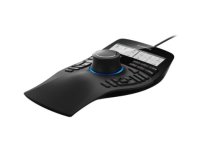BravoXray
Elite Member
- Joined
- Dec 17, 2019
- Messages
- 3,471
- Location
- Nothern Indiana
- Tractor
- Kubota BX2230, John Deere 430 Diesel
I looked at your hyperCube, seemed pricey for just a frame, but eh so far my ender is doing what I need. there are a couple different ways to kill power on the ender. haven't really gotten to that point yet, but its cool the duet3d gives you that functionality.
One of my best upgrades was a flexible PEI sheet for PETG (primarily all i print now). I can rip the part off the second the print is done if I want. I also have a bltouch and jyers 15x15 ubl firmware, and do a 4 point tilt test before every print. I now have printed over 50 items without a level. pretty amazing coming from where i started.
Yes, for what I have in my HyperCube I could have bought 4 or 5 Enders, but, the Duet3D board has a web interface so I can monitor it or download files to it to print from any of my other computers, cell phone or tablet. It also has the Duet 7" touch screen which is really nice for manually controlling the printer, like unloading and loading filament.
I made mine a little larger than the original Hypercube, and I ordered all the 3030 extrusions cut to length from a supplier in Columbia City, IN. I used lots of corner braces and a few other pieces to join the extrusions, and it is very rigid and pretty heavy. It also has a direct drive extruder which has worked very well for me.
Initially, I had a problem with the bed getting out of level since it has two Z axis steppers and when turned off the weight of the bed would get them out of sync. So I put a couple of pulleys on the shafts with a belt and idler pulley to hold them in sync, and I haven't had to level the bed in a couple of years, though I do check it occasionally.
